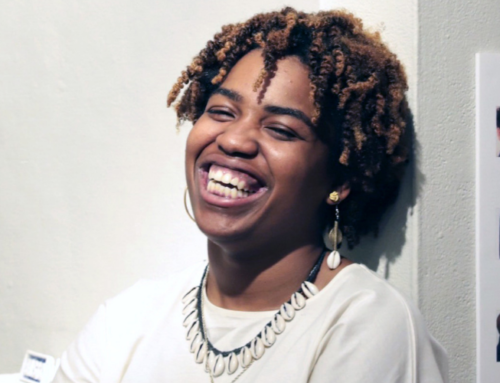In October, Yellowstone Art Museum Education Director Linda Ewert invited me to participate in an art program at the Montana Women’s Prison in Billings, Montana. This would be the most challenging and rewarding community I had yet engaged in a Guardian Monster Workshop.
Forms for entry into prison quickly invoked a sobering reality. “In the event of a hostage scenario the volunteer acknowledges they will be subject to the same protocols as prison employees.” Wait. What? Am I expendable? Workshop participants are named as “offenders”. You suddenly become aware of how pointy every clay tool is.
Then the day arrives. All the paperwork has been filled out and approved. Sitting outside the prison gates waiting for 8AM, re-reading the last minute protocol reminders, I was overwhelmed with excitement. I was so eager to find out what the next two days would hold. When I pressed the buzzer on the intercom for entry I was greeted warmly. Ewert arrived too and we set about arranging furniture and distributing supplies.
 As the women began to enter the room the non-verbal dialogue was fascinating, deafening, and then liberating. Liberating because there was no way we could manage everything going on in that room. We had no idea what their walks had been, what demons they fight. More than once I thought, “There but for grace, go I.”
As the women began to enter the room the non-verbal dialogue was fascinating, deafening, and then liberating. Liberating because there was no way we could manage everything going on in that room. We had no idea what their walks had been, what demons they fight. More than once I thought, “There but for grace, go I.”
The first job as a group was to establish a baseline for the duality within the idea of monster. We began our conversation by collaborating on a bank of words to describe monster: scary, mean, slimey, dark, huge, funny. Then we talked about what the physical manifestations of the descriptors might look like, resulting in a list of: horns, claws, scales, sharp teeth, etc. Now we confront the inquiry, “What does a claw actually do? What is the job function performed by sharp teeth?” The answers reveal the duality, a duality all people are familiar with, but a duality we forget. The duality of monster is one of those pieces of wisdom lodged in folds of our mind. If we keep getting shamed for using our claws, we lose sight of the fact that the claws are protecting something. Finally, I asked the women to take time to write down the job they needed their Guardian Monster to do.
Here’s a hard thing to keep in mind: The objects made in the workshops cannot be kept by the participants. The work may be on display within the prison for them to see and enjoy and take pride in, but they cannot possess the object.
The women take the intention and wad it into a larger ball of paper. This is the infrastructure for them to wrap clay around. We talk about how the heat of the kiln will meld the intention into the clay body. The details, textures, expressions, and stories they create span the breadth of human emotions.
The next time we met we entered into a darker conversation. Where the Guardian Monsters are meant to amplify the inner voice of our better selves, on the second day we confronted the Shadow Monster–the destructive side of monsters’ duality, with the intention of casting it out. The Shadow Monsters were grim, raw, dark, and finished so quickly I wondered if they were just making them to appease me. Until I read them.
I carried the Shadow Monsters away and destroyed them. On the banks of Rock Creek, I broke each bone dry Shadow Monster against the rocks. I named each fear aloud and dismissed it before burning the paper armatures. I told them I would kill these Shadow Monsters. And I did.
the Shadow Monsters away and destroyed them. On the banks of Rock Creek, I broke each bone dry Shadow Monster against the rocks. I named each fear aloud and dismissed it before burning the paper armatures. I told them I would kill these Shadow Monsters. And I did.
The gratitude, intuition, elegant savvy, and humanity they shared over the course of those two days was a gift. I was then and remain impressed by their creative agility and their ready access to the thin membrane between imagination and reality.
Jill Foote-Hutton lives in Red Lodge, MT where she runs Whistlepig Studio, LLC. This January she will be a Visiting Artist at Gulf Coast State College in Panama City, FL. If you’d like to read the unabridged version of the prison workshop visit her blog.







